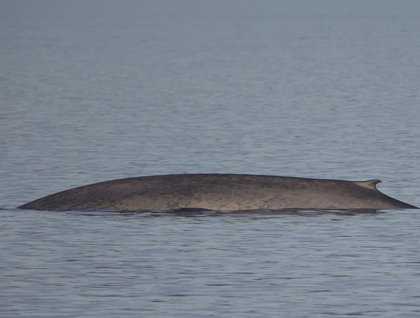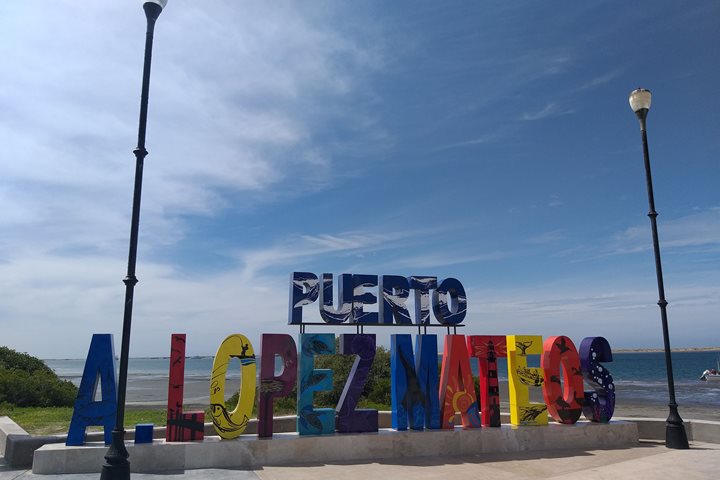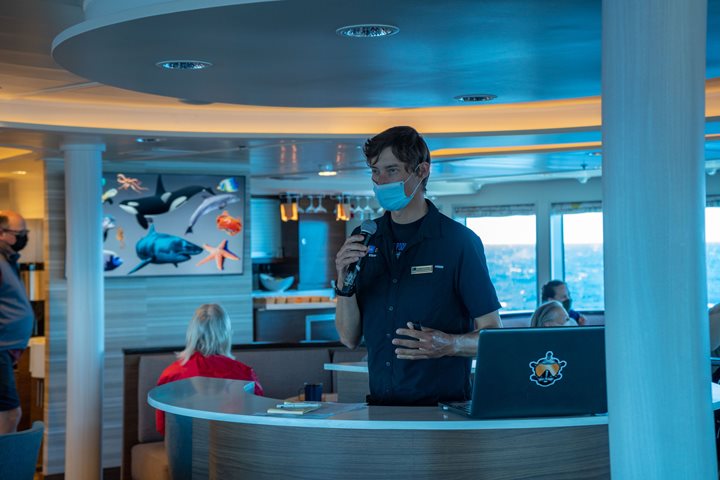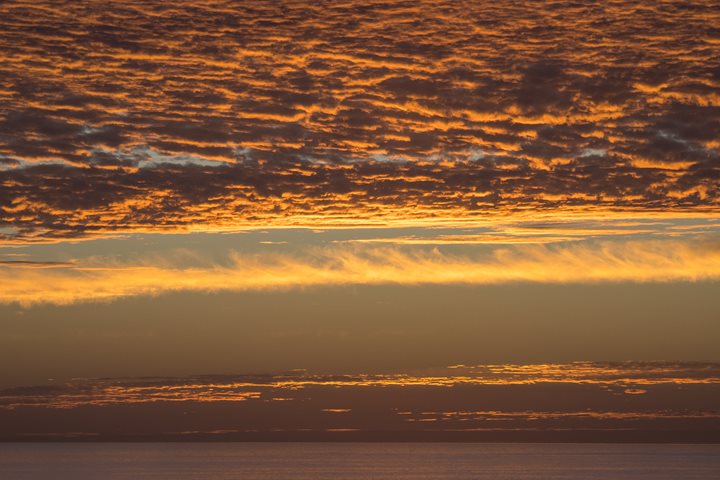After last night’s embarkation, National Geographic Sea Bird dropped her lines from the Costa Baja dock in La Paz and sailed north while we slept. We awakened in the waters off the coast of the peninsula near Isla Carmen in the hopes of finding marine mammals. People began gathering on the bow to a beautiful backdrop of pink- and blue-dusted skies, and around 7 a.m. a large blow was seen in the distance.
As we neared the source of the blow the naturalists confirmed—a blue whale! It’s hard to fathom its size… this creature—the largest animal ever to exist on Earth—can weigh up to 100 tons. One of our naturalists held up a picture with comparable other mammals lined up in front for scale—the elephant was dwarfed by about 8 times. Wow! We watched the whale take four or five breaths followed by a “terminal” breath with a large graceful arch of the spine revealing the tiny dorsal fin as the whale dove to feed on prey deeper down. We waited about ten minutes for it to resurface for more breaths, and the cycle repeated. After about an hour of whale waiting and watching, we dove down to the dining room for our own feeding, and resurfaced for more looks.
At some point we got distracted by a small pod of dolphins. Their welcome was fleeting and we were soon cruising for more wildlife. We were rewarded with a humpback whale visit very close to the boat and—another blue whale! This one looked smaller, maybe younger, and was followed by a much larger pod of bottlenose dolphins. They surrounded the boat and took turns bow-riding. The water was clear and calm and we got great looks at them as we peered over the edge of the railing. Guests who were enjoying their post-breakfast coffee in the lounge got a wonderful look on-screen from our bow-cam. After the exciting salutations from these amazing creatures we gathered in the lounge to learn more about them from naturalist Pete Pederson.
After lunch the National Geographic Sea Bird anchored off the coast of Isla Santa Catalina, and we prepared for snorkeling and hikes ashore. Many colorful fish swim along the rocks at the base of Elephant Rock. Snorkelers slipped from an anchored inflatable boat into refreshing waters and, as sometimes happens, were greeted by harmless yet irritating little stinging creatures. They took it in stride and cheerfully splashed themselves with vinegar solution upon returning to the snorkel boat. Truly an expedition, we can’t always predict what we’re going to find!
Walks on Isla Santa Catalina provided a good introduction to life in the desert. The “trail”: an arroyo, or fissure created by big storms that channel water and debris down to the sea. Isla Santa Catalina is home to many huge plants and cacti, and also home to a number of species endemic to the island including the great barrel cactus and the rattle-less rattlesnake. Huge cardon cactus forests are seen here and many other plants and birds. I’m always amazed at how much life is in the desert. The long hikers clambered up and over rocks, through prickly patches, and were rewarded with stunning views over a cliff-edge down to the sea on the other side.
Back on board for the evening, we are gathering in the lounge for cocktails and to recap our day. Our undersea specialist will be showing footage of his dive around Elephant Rock, and we will discuss highlights of our day and plans for tomorrow. What a spectacular welcome to this abundant land- and sea-scape!







